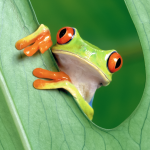Week 1
What does it mean to recycle?
We know that recycling is an important way to help care for the environment. Your child may be interested to learn about what happens when recyclable materials leave your home!
SOMETHING TO CONSIDER
Writing down your child’s questions shows him that you value his thoughts and ideas. It also helps him understand that written words can be read and have meaning. Additionally, revisiting a list of questions and answers helps your child make connections between what he knows and what he still wants to find out.
Week 2
What do we know about insects? What do we want to find out?
A great way to begin this study of insects is with a walk outside to look for them! What insects do you see in your neighborhood? You don’t have to catch insects and bring them inside to study them. Give your child a camera or paper and pencil to document what they find outside.
Take a walk outdoors and take photos of the insects you find. Encourage your child to describe what they notice by zooming in on the details! Use this video to help generate ideas for creating an informative poster. As you work together, ask:
What is the first thing we’ll do to stay safe when we go outside? How will we keep the insects safe?
Why It’s Important
Observing closely encourages children to notice details, make comparisons, and make connections to their own lives.
Not Ready Yet
Model how to zoom in on pictures of insects taken with your device. Point out details using descriptive language.
Need a Challenge
Invite your child to examine the insect’s details closely. Introduce descriptive language such as “antennae,” “translucent,” “thorax,” and “beneficial.” Encourage your child to use these new vocabulary words throughout the day in different settings.
Journal/Talk
Encourage your child to draw the details they noticed in the pictures or in your insect collection in an “insect journal.” Add additional insects to the journal as you notice them!
Book Recommendations
“Lucy’s Light” by Margarita del Mazo
Extend the Learning
Research the insects you found online or in reference books. As you add to your “insect journal,” add information about how the insects’ unique bodies help them live.
SOMETHING TO CONSIDER
Insects are defined as “small animals with bodies divided into three parts, six legs, and usually one or two pairs of wings.” It is important to keep this definition in mind when looking for insects in your area to avoid mistakenly classifying arachnids (spiders) or arthropods (centipedes) as insects.
Week 3
What are the characteristics of insects?
What if we want to learn about the characteristics of insects? Where can we find out? Encourage your child to think of ways to find new information, and then explore those options. Your local library or a simple internet search will likely be very helpful!
Mighty Minute
- Explain to your child that people often feel grateful when someone has done a nice thing for them. Say, “Talking about things you are grateful for can make you feel happy.”
- Share something you are grateful for, e.g., “I am grateful for Mr. Harris, who helped me bring the garbage cans back to the house this morning.”
- Encourage your child to share something they are grateful for. Offer assistance as needed.
SOMETHING TO CONSIDER
To teach your child about the importance of arm and leg joints, invite her to try to climb over toys and pillows without bending her arms or legs, and then climb over them again while bending them. Ask her to tell you which way of climbing was easier and why.
Week 4
Where do insects live? How do they live?
We’re learning about where insects live. Ask your child to share what he has learned about insect habitats, and then take a walk to look for signs of insects. Take pictures of what you find. When you get home, look for more information about the insect homes in your photos.
SOMETHING TO CONSIDER
Before going on an insect hunt in your neighborhood, demonstrate how to lift rocks, logs, etc., safely by lifting the part that isn’t facing you. Explain that finding insects this way allows them to run out away from you, not toward you.


